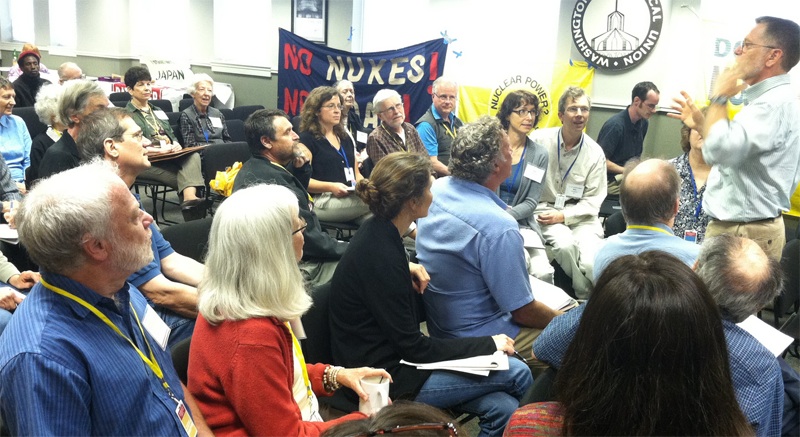Japan idles its nuclear power plants

During the first weekend in May, as the Sierra Club’s No Nukes Team hosted its Summit in Washington, D.C., Japan’s last running nuclear reactor was turned off, leaving Japan without nuclear power for the first time in more than four decades.
Japan’s first nuclear reactor was turned on in 1966. By 2011, 54 reactors provided 30% of the country’s electricity. Now, the nation’s nuclear power industry has shut down. On May 7, the New York Times reported that Japan’s sole operating power reactor stopped generating electricity at 11:03p.m. on May 5, and nuclear reactions ceased at 4 a.m. on May 6. The unit shut down for mandatory maintenance required after the tsunami disaster at Fukushima Daiichi last year.
Though of course the No Nukes Team did not cause this, the action, which may be temporary, nonetheless represents a change in public sentiment as a result of the meltdown at Fukushima and may be a harbinger of what could happen in the United States (which has 23 Mark 1 reactors of similar design to those at Fukushima).
In the aftermath of the shutdown, a major question is what energy sources will replace nuclear plants in Japan. According to the same New York Times story, the new lack of nuclear power has prompted Japan to turn to "coal, oil and gas-fired plants to keep factories, offices and households supplied with electricity" and "Japan's 10 regional power utilities bought record amounts of liquefied natural gas last year to replace nuclear fuel," while petroleum consumption was the highest it has been in at least 10 years.
The issue of nuclear power is one of great importance to the Sierra Club locally andnationally. The No Nukes Team‘s Summit clearly demonstrated this concern. More than 80 people, including several directors and staff, took part in the weekend’s activities, which combined learning from experts and campaign planning.
●Dave Freeman, former head of the Tennessee Valley Authority, and now a prominentanti-nuclear spokeperson ("Anyone who would substitute plutonium for carbon is an idiot"),
●Arjun Mahkijani, president of the Institute for Energy and Environmental Research (and recent candidate for the Club board),
●Marvin Resnikoff, a nuclear physicist and former chair of the Club’s nuclear energy subcommittee in the late 1970s,
●Arnie Gunderson, a licensed nuclear reactor operator, who is now chief engineer for Fairewinds Energy Education ("No plant has been stopped because it’s unsafe, butbecause safety issues made it too costly"),
●Diane D’Arrigo, an expert on low-level nuclear waste, core team leader of the Club No Nukes Team, and staffer at Nuclear Information and Resource Center, and
●Robert Alvarez, former DOE staffer, now senior scholar at Institute of Policy Studies, anexpert on the economics of nuclear power.
Leslie March, who coordinated the summit, said, "We were hanging out with the rock stars of themovement. We had people calling us to get on the program."
The summit also focused on drafting a campaign plan. Participants broke into four groups — stopping new nukes; shutting down existing nukes; addressing radioactive waste (low-level/highlevel); and addressing the "front end," including mining, milling, and enrichment — with the goal of identifying meaningful outcomes that could be achieved in the next six months to a year.
Sierra Club Angeles Chapter intern Emma Smith contributed to this story.
Click here for more on the report from the Club No Nukes Team.
Keep the conversation going -- "like" us on Facebook and follow us on Twitter @SierraClubLA_OC.



Add new comment